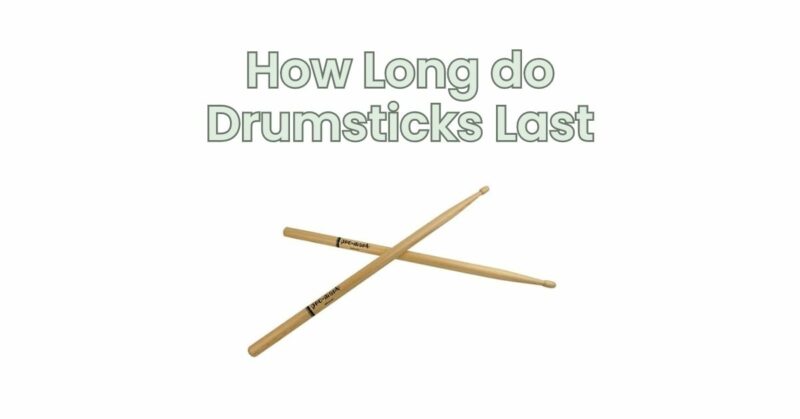Drumsticks are the essential tools that drummers rely on to create rhythm and bring music to life. However, like any instrument accessory, drumsticks have a limited lifespan and eventually wear out. In this article, we will explore the factors that affect the durability of drumsticks and provide insights into how long drumsticks typically last.
- Playing Style: The longevity of drumsticks is influenced by the drummer’s playing style. Drummers who play with intensity, hit hard, or frequently use rim shots and cymbal crashes may experience faster stick wear. On the other hand, drummers who play with a lighter touch or focus on more delicate techniques may prolong the lifespan of their drumsticks.
- Drumming Technique: The way drummers hold and strike the drums impacts stick wear. Proper technique, such as using rebound and allowing the drumstick to do the work rather than relying solely on muscle strength, can help extend the lifespan of drumsticks. Drummers who consistently strike the drums at the sweet spot, rather than hitting the rim or edge, also tend to experience less stick breakage.
- Stick Material: Different drumstick materials have varying levels of durability. Hickory, which is the most common wood used for drumsticks, is known for its strength and resilience. It offers a good balance between durability and feel. Maple drumsticks are generally lighter and may not withstand heavy hitting as well as hickory. Specialty materials like carbon fiber or aluminum drumsticks tend to have greater durability and longevity, but they can be more expensive.
- Wood Density and Quality: Within the same drumstick material, variations in wood density and quality can affect stick longevity. High-quality drumsticks made from dense and well-selected wood tend to last longer than sticks made from lower-quality wood. Quality drumsticks undergo rigorous manufacturing processes to ensure durability.
- Maintenance and Care: Proper maintenance and care can contribute to the lifespan of drumsticks. Avoid playing with damaged drumheads, as they can cause unnecessary stress and premature wear on the sticks. Additionally, regularly inspecting your drumsticks for cracks, splintering, or significant wear and replacing them when necessary can help prevent breakage during performances.
- Playing Environment: The playing environment can also impact the lifespan of drumsticks. Drumming in extreme temperatures or high humidity can weaken the wood and increase the likelihood of stick breakage. Storing drumsticks in a controlled environment, away from direct sunlight or excessive moisture, can help maintain their structural integrity.
Average Lifespan: It is challenging to provide an exact lifespan for drumsticks as it varies greatly depending on the factors mentioned above. On average, drumsticks can last anywhere from a few weeks to several months, with regular playing. Heavy hitters or drummers who play frequently may need to replace their sticks more frequently, while lighter players may enjoy longer-lasting sticks.
Signs of Wear and Replacement: Several signs indicate that it’s time to replace drumsticks:
- Visible cracks or splintering on the shaft or tip.
- Noticeable taper wear, where the diameter of the drumstick becomes significantly thinner.
- Loss of balance or excessive vibration during playing.
- Reduced rebound and control.
- Splintered or chipped tips that affect sound quality or drumhead integrity.
It’s important to have spare drumsticks readily available to ensure uninterrupted practice or performance.
The lifespan of drumsticks is influenced by various factors, including playing style, drumming technique, stick material, wood density, maintenance, and playing environment. While it is difficult to provide an exact timeframe for how long drumsticks last, understanding these factors and practicing good stick maintenance can help prolong their lifespan. Regularly inspect your drumsticks for signs of wear and replace them when necessary to ensure optimal performance and minimize the risk of breakage during playing sessions or live performances.

